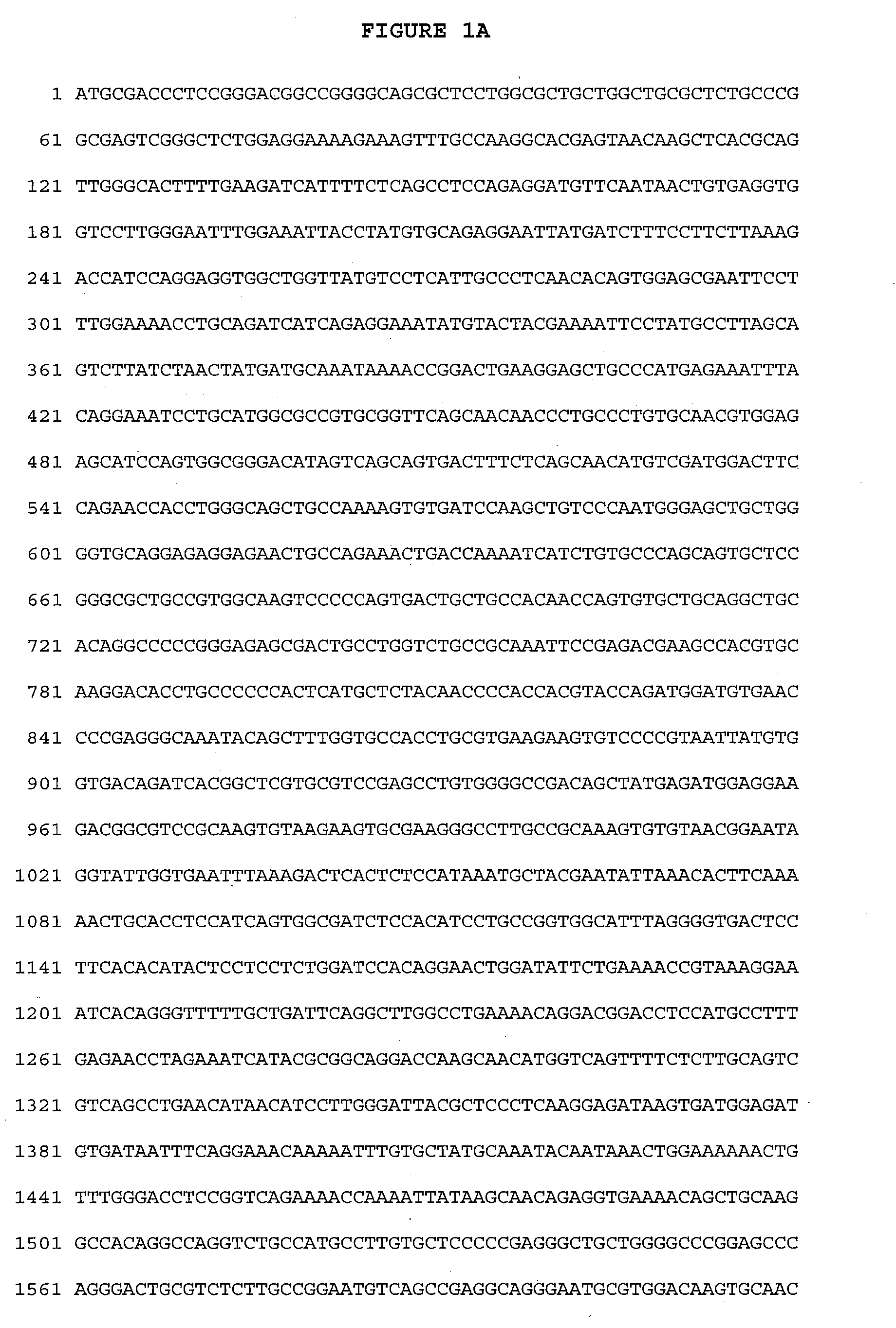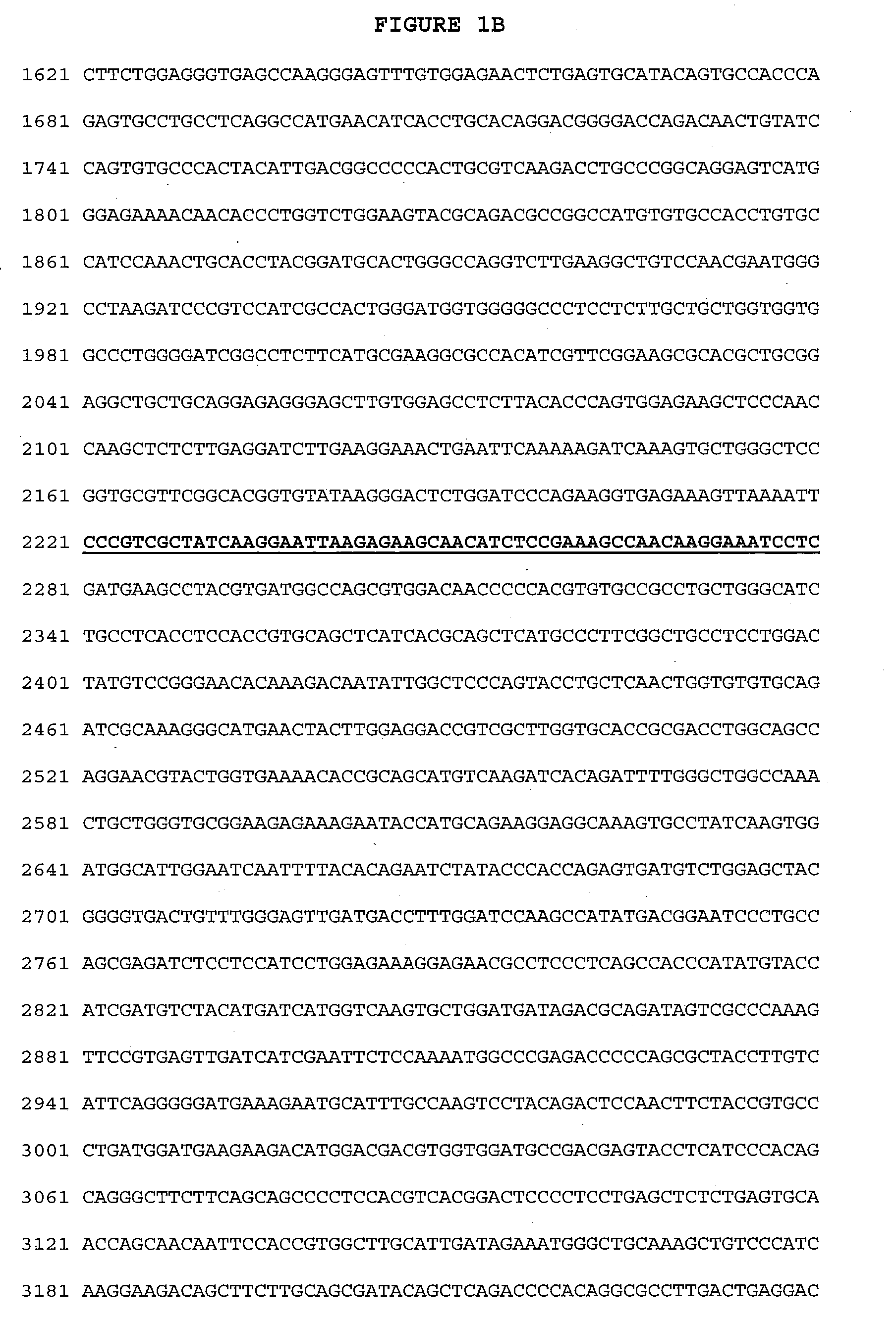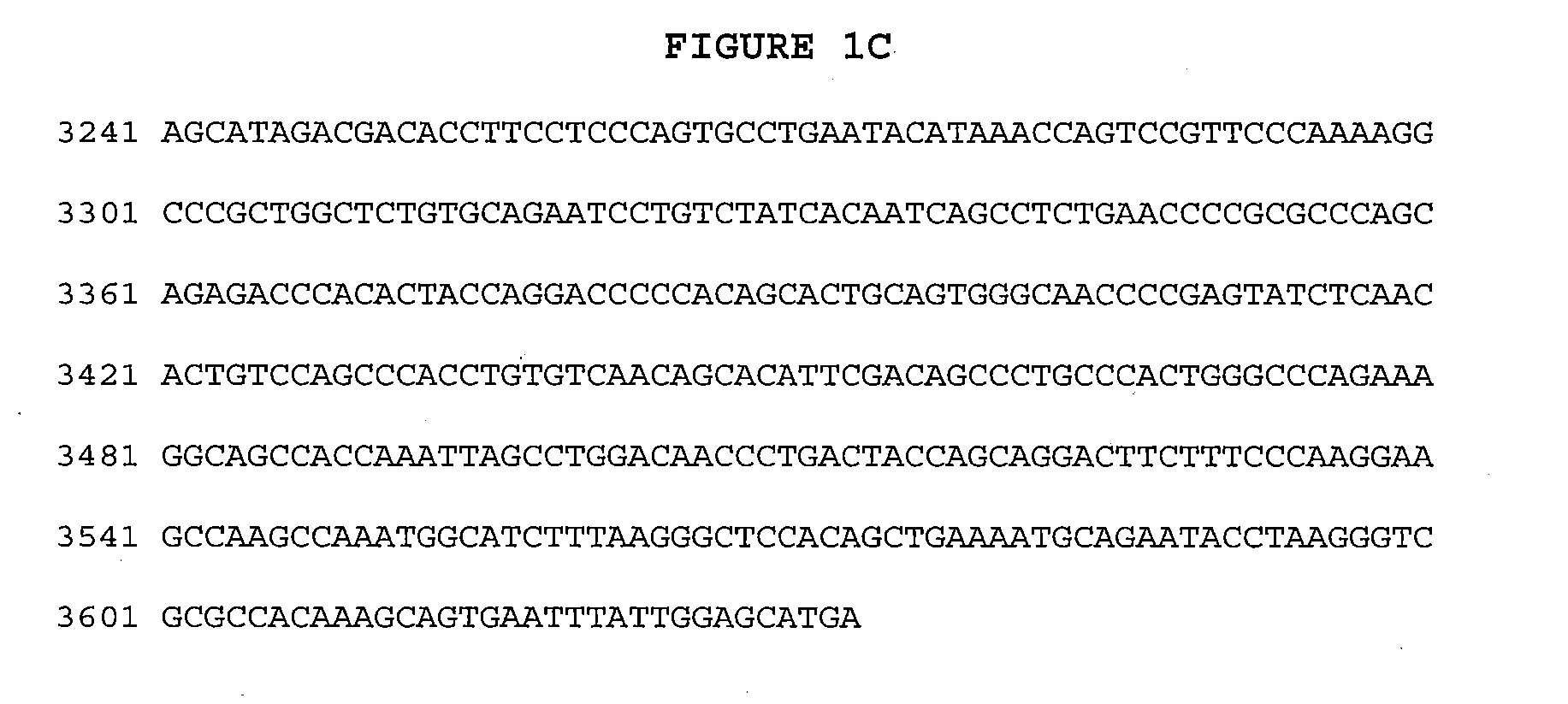Novel Complex Mutations in the Epidermal Growth Factor Receptor Kinase Domain
a technology of epidermal growth factor and complex mutations, applied in the field of cancer diagnostics and companion diagnostics for cancer therapies, can solve the problems of affecting the clinical outcome of some patients, patients with such mutations will not receive potentially life-saving treatment, and the possibility of detecting this mutation
- Summary
- Abstract
- Description
- Claims
- Application Information
AI Technical Summary
Benefits of technology
Problems solved by technology
Method used
Image
Examples
example 1
[0058]Identifying Mutations in Lung Cancer Patient Samples
[0059]Tissue samples were obtained from lung cancer (NSCLC) patients. The samples were preserved as formalin-fixed, paraffin embedded tissue (FFPET). Nucleic acids were isolated from the samples and subjected to direct sequencing on the Genome Sequencer FLX instrument (454 Life Sciences, Branford, Conn.).
[0060]The 2236—2248>ACCC mutation was detected in the average of 24.6% of the total of 3,550 reads from a sample. The 2237—2244>CGCCC mutation was detected in the average of 27.7% of the total of 4205 reads from a sample. The 2252—2277>AC mutation was detected in the average of 24.6% of the total of 5368 reads from a sample. The 2240-2264>CGAAAGA mutation was detected in the average of 32.2% of the total of 3394 reads from a sample. The 2239—2240 TT>CC mutation was detected in the average of 74.3% of the total of 3120 reads from a sample. The 2264 C>A mutation was detected in the average of 32.8% of the total of 3394 reads fr...
example 2
[0061]Detecting the Mutations Using Allele-Specific Oligonucleotides
[0062]In this example, the mutant and wild-type targets were represented by plasmids containing the mutant and wild-type inserts respectively. The targets were amplified using either mutation-specific primers or, in control reactions, non-selective “common” primers.
[0063]Each 15 μl reaction contained 10,000 copies of the target DNA and standard PCR reagents including nucleoside triphosphates, DNA polymerase, uracil-N-glycosylase, and 0.1 μM each of forward and reverse primer, and 0.05 μM probe (all selected from Table 2), Amplification and analysis were done using the LightCycler™ 480 instrument (Roche Applied Science, Indianapolis, Ind.) Reactions were cycled using the following profile: 50° C. for 5 minutes, followed by 2 cycles of 95° C. for 10 seconds and 62° C. for 30 seconds, followed by 55 cycles of 93° C. for 10-seconds and 62° C. for 30 seconds.
[0064]Results for each forward primer are shown in Table 3. Amp...
PUM
| Property | Measurement | Unit |
|---|---|---|
| size | aaaaa | aaaaa |
| stable | aaaaa | aaaaa |
| length | aaaaa | aaaaa |
Abstract
Description
Claims
Application Information
 Login to View More
Login to View More - R&D
- Intellectual Property
- Life Sciences
- Materials
- Tech Scout
- Unparalleled Data Quality
- Higher Quality Content
- 60% Fewer Hallucinations
Browse by: Latest US Patents, China's latest patents, Technical Efficacy Thesaurus, Application Domain, Technology Topic, Popular Technical Reports.
© 2025 PatSnap. All rights reserved.Legal|Privacy policy|Modern Slavery Act Transparency Statement|Sitemap|About US| Contact US: help@patsnap.com



